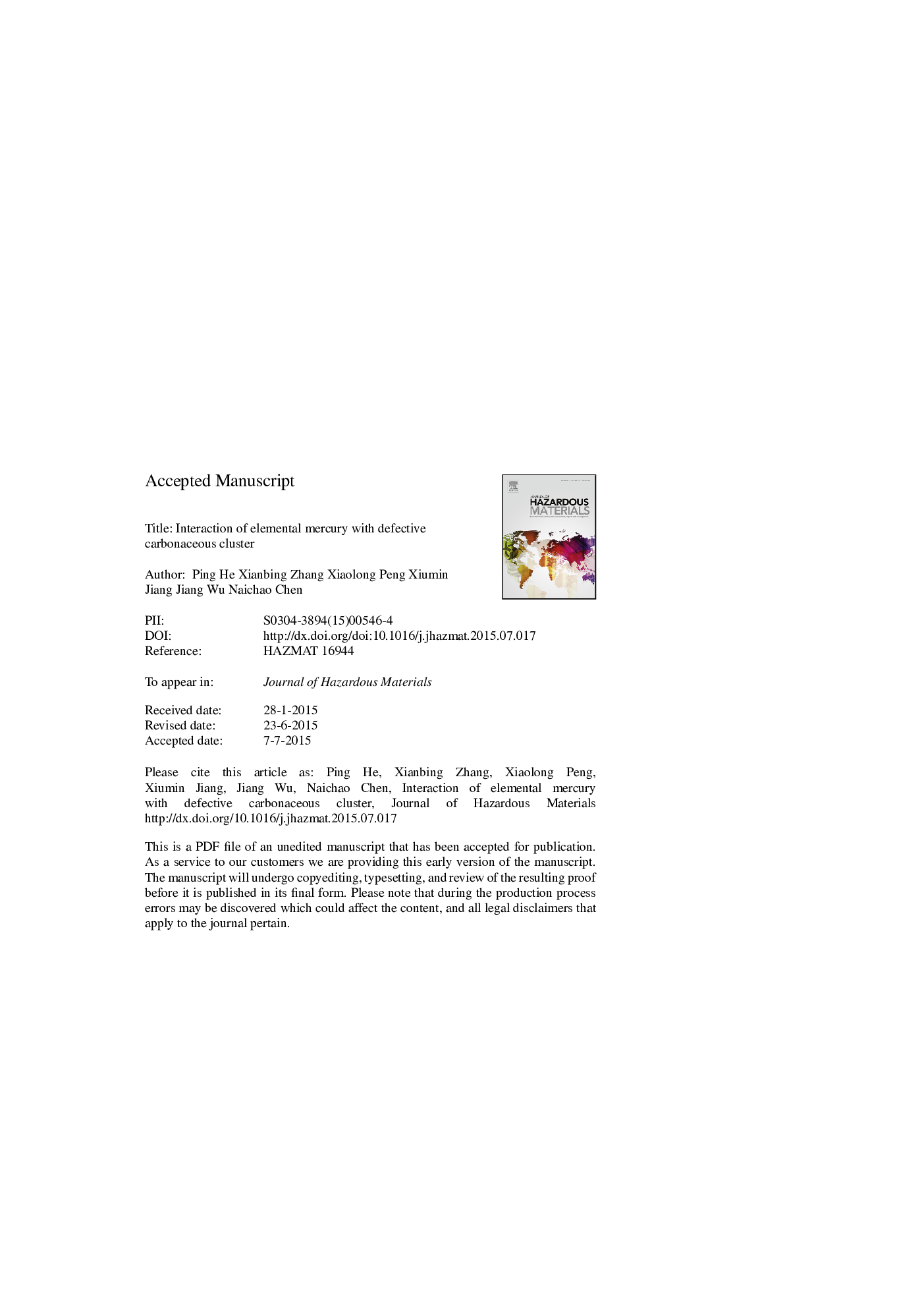| Article ID | Journal | Published Year | Pages | File Type |
|---|---|---|---|---|
| 575701 | Journal of Hazardous Materials | 2015 | 38 Pages |
Abstract
The interaction of elemental mercury with defective carbonaceous clusters is investigated by the density-functional theory calculation. The defective carbonaceous cluster is represented by seven-fused benzene ring and single atomic vacancy at the surface. Also, the non-defective carbonaceous surface is employed for comparison. The defective carbonaceous cluster with chlorine is carried out to evaluate the effect of the statured carbon at the neighboring sites of vacancy on mercury adsorption. The results indicate that vacancy can promote the activity of its neighboring sites, and the defective carbonaceous cluster has much larger mercury adsorption energy than the non-defective carbonaceous cluster with and without chlorine. Cl atom can improve the activity of its neighboring sites on the non-defective carbonaceous surface, but the effect of Cl atom on mercury adsorption of vacancy is very complex, which depends on the Cl concentration. High concentration of Cl decreases the mercury adsorption because Cl competes for the active sites with mercury. Hence, we find that vacancy can be regarded as a potential functional group to improve the mercury adsorption on carbonaceous surface, but the saturated carbon at the neighboring sites of vacancy can rapidly decrease the mercury capture capacity.
Keywords
Related Topics
Physical Sciences and Engineering
Chemical Engineering
Chemical Health and Safety
Authors
Ping He, Xianbing Zhang, Xiaolong Peng, Xiumin Jiang, Jiang Wu, Naichao Chen,
